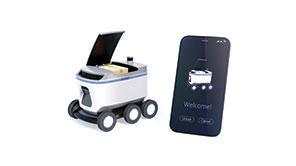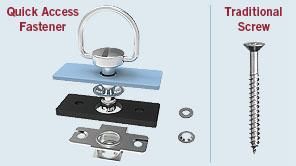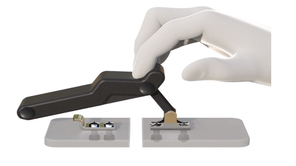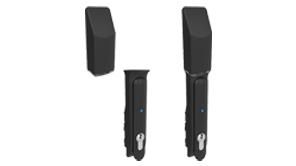Electronic Access for Medical Equipment

To meet this growing need for more security in medical applications, manufacturers must build equipment, such as medical carts, employing access control systems that meet regulatory requirements, can be networked with the facility’s larger security infrastructure and ensure simple, intuitive end user operation.
Healthcare Meets the Digital Age
The goal of converting medical records and information to an electronic format is to make them easier to share and access among the healthcare network; however, patient data must be kept secure and protected from data breaches. In 1996, the enactment of the Health Information Portability and Accounting Act (HIPAA) changed the priorities of the U.S. healthcare industry forever, by adding a level of security concerns for both equipment manufacturers and facility operators.
Additionally, digital technologies have made healthcare equipment smaller, lighter and more portable. While this new technology was designed to help streamline work processes for medical personnel, it has also moved equipment out into areas that are more accessible to non-employees. Where equipment was once well removed from the public in specialized, secure rooms, today it is bedside, kept in corridors or parked near nurses’ stations. This means that supplies, drugs and other controlled substances may be more visible targets for thieves.
Unfortunately, many facility operators have been saddled with 20th century security to protect 21st century equipment. Managing mechanical keys can be complicated, inconvenient and costly. Physical keys need to be carefully managed to ensure they are in the hands of authorized personnel only. These keys must also be retrieved and reassigned when employees change shifts or are no longer employed by the institution, which can be a challenge in larger facilities. By replacing traditional key locks with electromechanical locks and latches (EMLs) access to medical equipment can be easily modernized to meet evolving security needs.
Solutions for Physical Security and Monitoring
EMLs allow medical equipment manufacturers to build intelligent security into their products. When used as part of an electronic access system (EAS), an electronic lock creates an electronic signature that can provide user authentication, audit trail and reporting capabilities, simplifying security administration and eliminating opportunities for physical security breaches.
Electronic access solutions are ideal for medical equipment as they can provide an indisputable access audit trail for all doors and cabinets secured electronically. Each time an EML-equipped enclosure opens or closes, a signal is sent to a monitoring system to confirm and log access. Depending on the configuration, EAS reporting can provide more than just simple open/closed information – such as which credential activated the EML and the time and duration of the event.
Using an EML with all or part of an existing security system is a cost-effective choice for the healthcare institution considering new or replacement equipment, as it provides the operator with real-time monitoring and an audit trail of all access activity. EAS also allow access records to be viewed remotely, so monitoring personnel need not be onsite.
An electronic rotary latch, for example, provides a simple, versatile solution for a variety of medical applications. This compact latch is mounted inside the equipment , using minimal interior space and allowing a clean exterior appearance that protects it from vandalism. Electronic rotary latches can be easily wired directly to a wide variety of access-control devices, from standalone keypads to networked RFID proximity readers and biometric readers for a complete remotely managed access system.
Best Practices for EML Selection
Serving as both a locking/latching device and intelligent access interface, an electronic latch offers a full range of retrofit options to update the security and control of existing cabinetry and enclosures on medical equipment. When selecting a quality EML – such as an electronic rotary latch – for a medical design application, it should meet the following criteria:
- Integrates easily with existing control systems
- Provides simple and versatile installation options
- Includes a mechanical override feature for manual release in case of power failure
- Provides optimum efficiency to provide high mechanical strength while using minimum electrical power
- Incorporates built in intelligence to allow for various locking features such as delayed re-locking, lock status monitoring, sleep mode and communication with external systems
When designing physical security into medical enclosures, manufacturers must anticipate the need for modern methods of access control and incorporate new technology, while still providing a solution that is cost-effective and meets the requirements of the changing healthcare landscape. Incorporating appropriate electromechanical locks into medical enclosure design is key to delivering an end product that delivers convenience, usability and above all, security.



